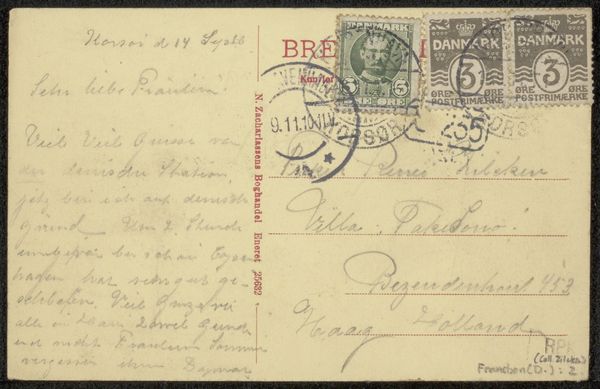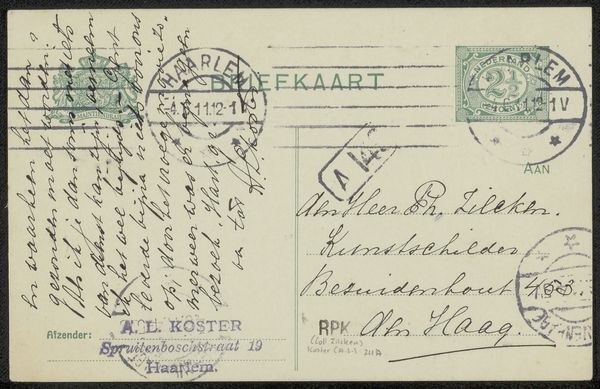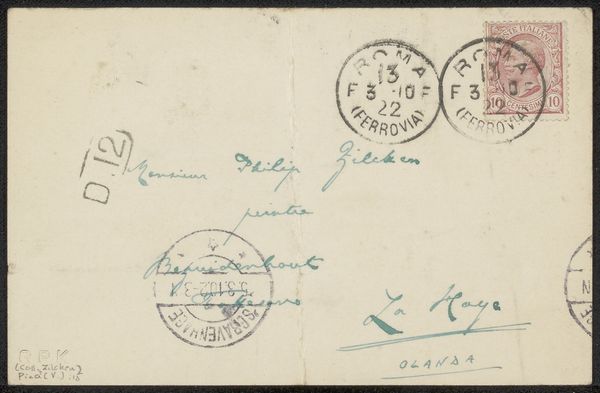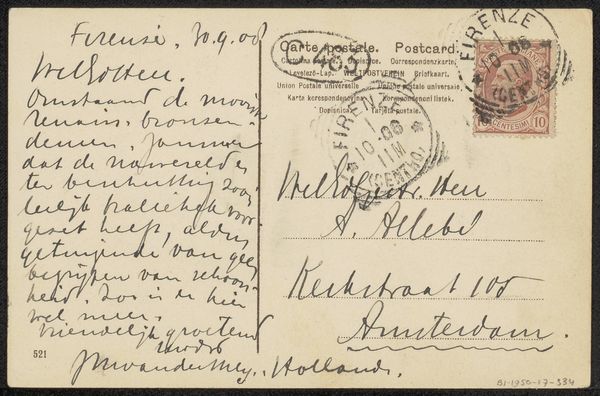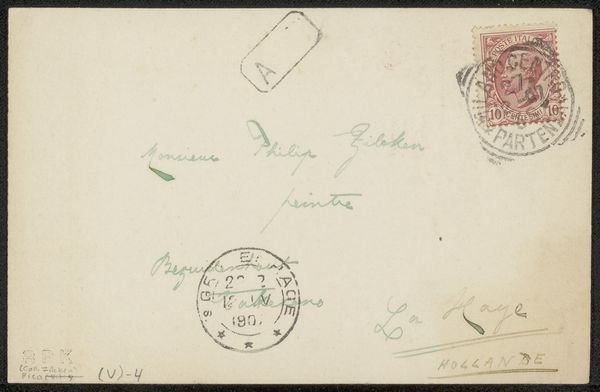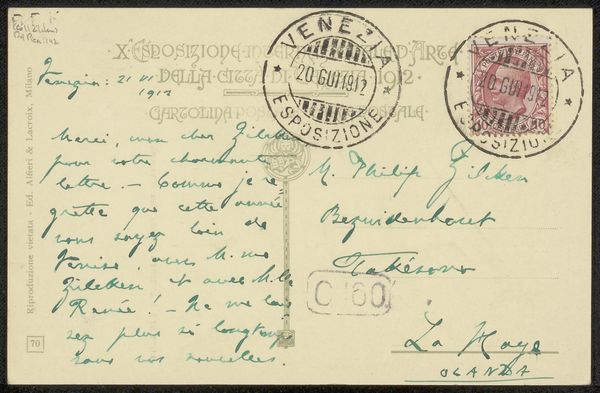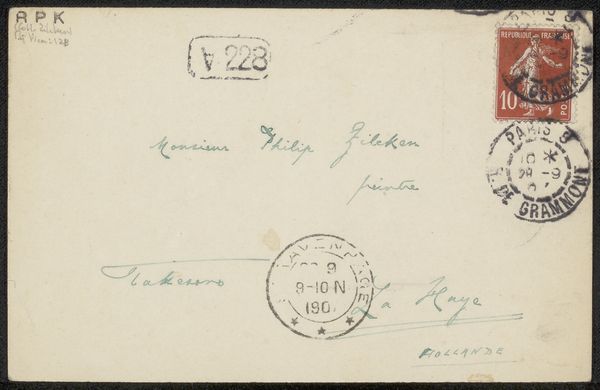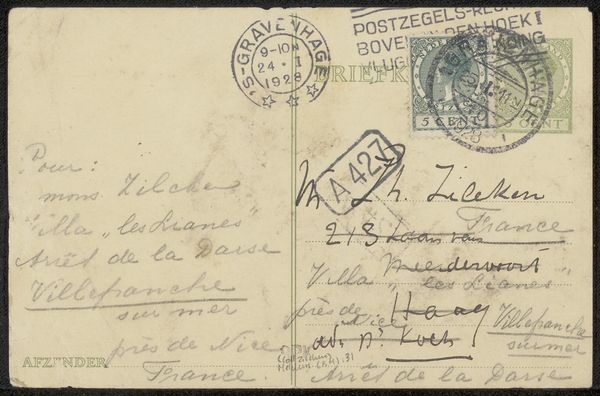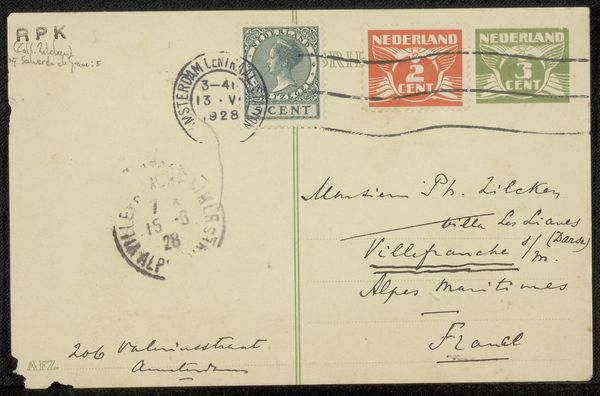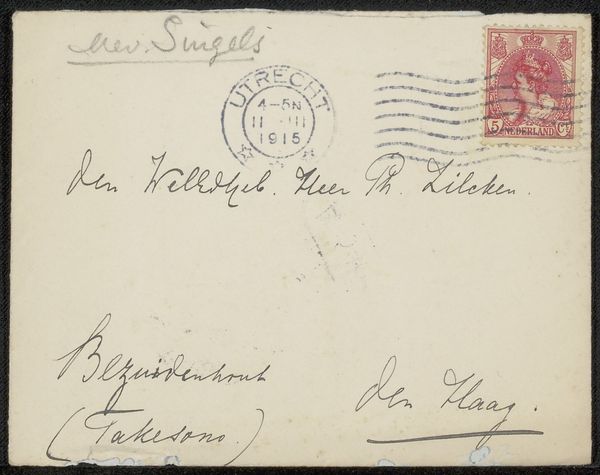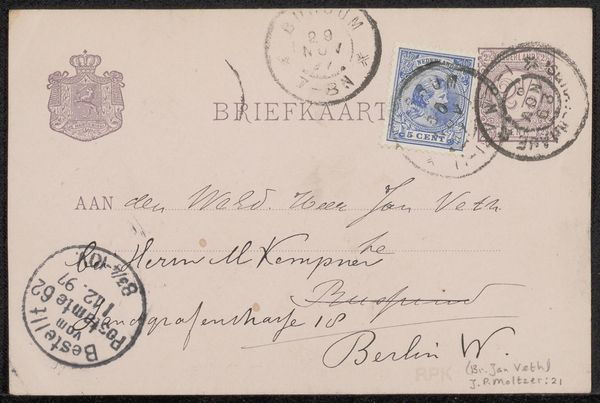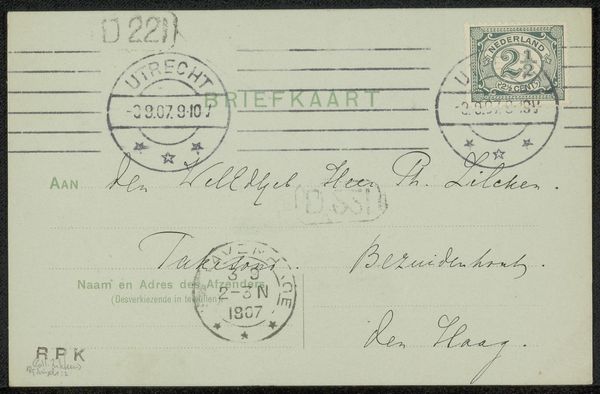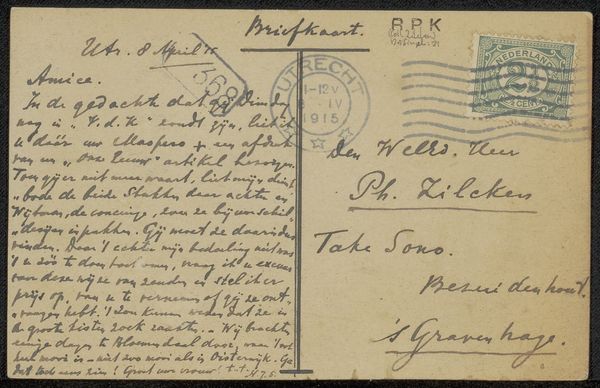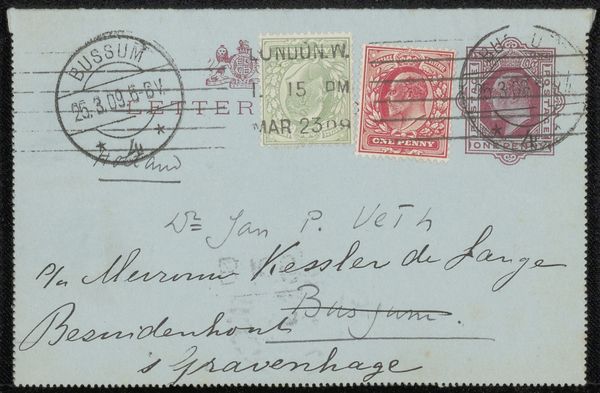
drawing, paper, ink
#
drawing
#
pen drawing
#
pen sketch
#
paper
#
personal sketchbook
#
ink
#
pen-ink sketch
#
ink colored
#
pen and pencil
#
pen work
#
sketchbook drawing
#
storyboard and sketchbook work
#
sketchbook art
Copyright: Rijks Museum: Open Domain
Editor: This is a postcard to Philip Zilcken, possibly from 1912, by Carel Nicolaas Storm van 's-Gravesande. It looks like ink on paper. What really strikes me is how much text there is – it almost overwhelms the image itself. What stands out to you in this piece? Curator: The fascinating aspect for me lies in the materiality of this object and the social context of its creation. Look at the various marks - handwriting, stamps, the printed details of the postcard itself. Each indicates a process of production, labor, and distribution. The handwriting itself is a physical manifestation of communication, of someone taking the time to craft a message. How does the material itself—cheap paper stock, perhaps?—impact its status as art versus ephemera? Editor: That’s an interesting point! It makes me consider the difference between a quick sketch and something intended to be a lasting artwork. Was this kind of postcard commonplace back then? Curator: Absolutely. The mass production of postcards in the early 20th century reflects changing patterns of consumption and communication. This wasn’t "high art," initially; it was a commodity, intended for widespread use. But now, as a historical artifact displayed in a museum, how has its perceived value shifted? Editor: I see what you mean. So, examining the materials and how it was made and used can tell us more about society and the artist's role in it? Curator: Precisely! We can think about the labor involved in each step, from manufacturing the card stock, the artist creating the original artwork (if any), to the postal workers handling and delivering it. Editor: That really makes me look at it in a new light. It's not just a pretty picture; it's a trace of many hands and processes. Thanks! Curator: Exactly. Thinking about the entire material and social process broadens our understanding and appreciation beyond just aesthetics.
Comments
No comments
Be the first to comment and join the conversation on the ultimate creative platform.
